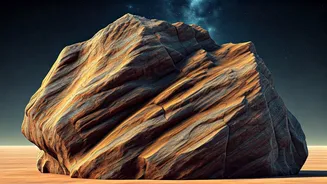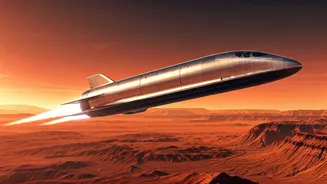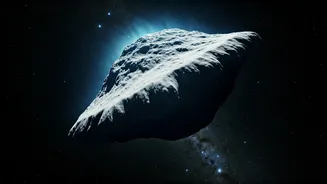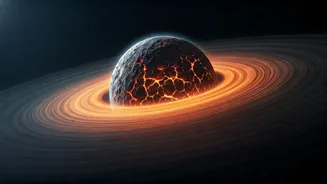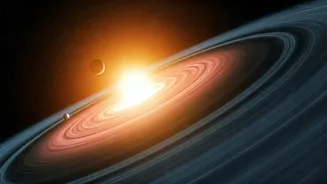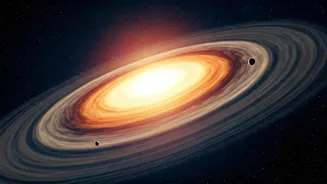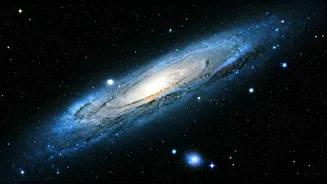Pressure's Subtle Influence
The genesis of planets is a captivating cosmic ballet, largely directed by the unassuming influence of pressure on solid surfaces. These surfaces are not
merely passive participants; instead, they are dynamic entities shaped by a multitude of forces, with pressure being a significant director. It determines whether atoms bind and how these nascent building blocks collide. The outcome is the eventual clumping together of these particles into larger bodies, and, over immense periods, this pressure leads to the formation of objects such as asteroids, comets, and even planets. This process is crucial, as it sets the stage for the next phase of planetary growth. Furthermore, the interplay of pressure on surfaces provides crucial details that aid in determining what types of atmospheres planets may be capable of supporting and if they are able to retain water, essential ingredients for the development of life, as we know it.
Forming Rocky Planets
In the initial stages of planet creation, pressure is a driving force behind the aggregation of solid particles, beginning the process of forming rocky planets. Picture a vast cloud of dust and gas, swirling under the influence of gravity. Within this cloud, tiny grains begin to collide and stick together due to the interplay of pressure and other forces, growing into ever-larger entities. These 'planetesimals', with sizes ranging from pebbles to kilometers, are the seeds of planets. As these planetesimals grow, their gravity intensifies, drawing in more material and leading to a cascade of collisions and mergers. The cumulative effect of these events is the formation of terrestrial planets, like Earth and Mars. The surfaces of these growing planets are constantly reshaped and reorganized under pressure, a cycle of creation and destruction.
Mini-Neptune Worlds' Secrets
Recent findings from the James Webb Space Telescope offer new understanding of mini-Neptune worlds. These planets, characterized by a size greater than Earth but smaller than Neptune, possess intriguing atmospheres that scientists have long sought to understand. The telescope's advanced instruments are crucial to these explorations. The atmospheres of these worlds are highly influenced by the interplay between solid surfaces and pressure. This interplay can cause a variety of outcomes. The surface composition dictates the kind of elements in the atmosphere, whilst pressure governs how these elements interact. The goal is to determine the chemical profiles of these mini-Neptunes and learn more about their history and their future.
Observing Baby Planets
Astronomers are actively observing the early stages of planet formation by studying the disks of gas and dust that encircle young stars, with intriguing results. The disks, composed of raw materials, are where planets begin to coalesce. The solid surfaces of particles within these disks play a pivotal role in the aggregation process. As these particles collide and accumulate, the effects of pressure become evident in the structure of the disk itself. Observations from telescopes show the existence of gaps and rings within these disks, which are indications of planets forming and sweeping up material along their orbits. The dynamics of pressure help determine the densities and composition of these forming planets and have a crucial role in predicting the final architecture of a planetary system.
